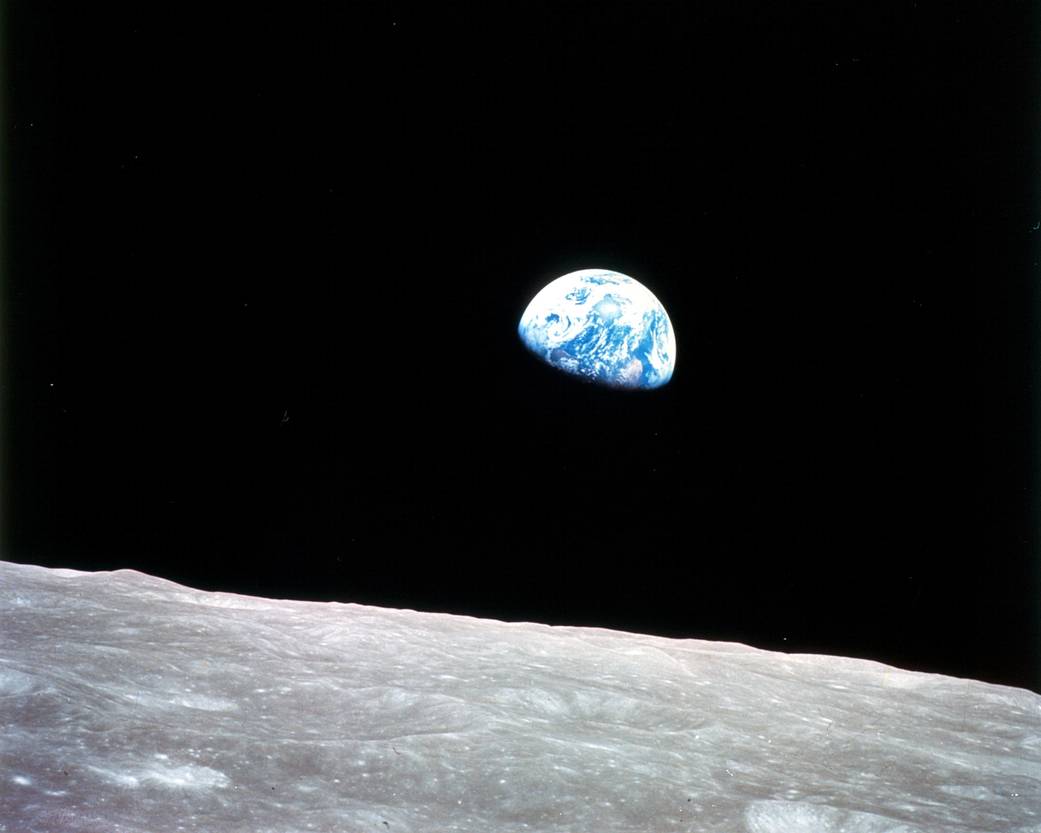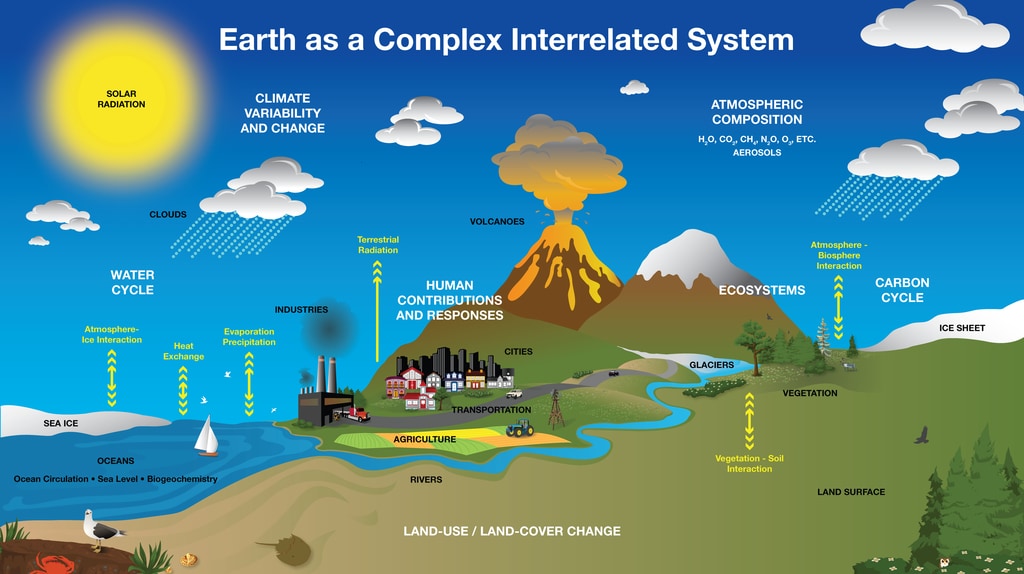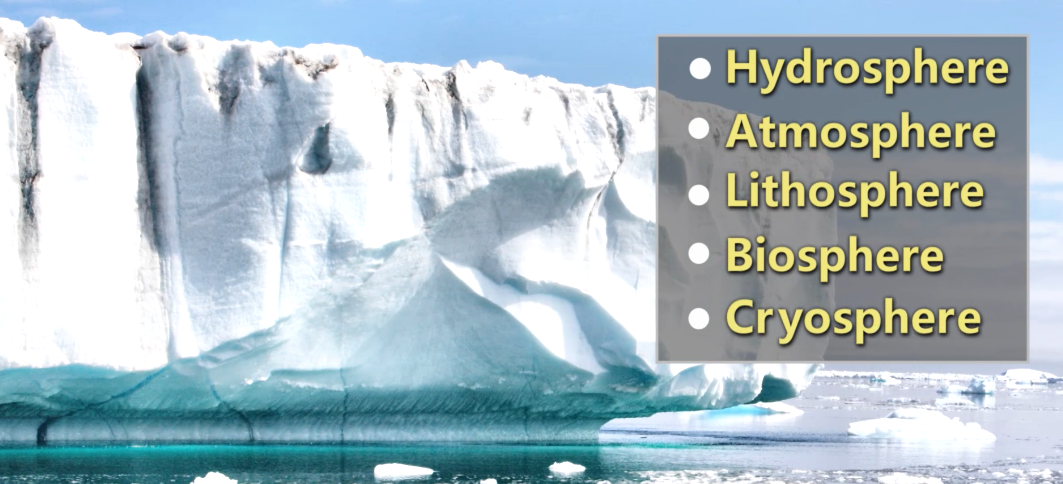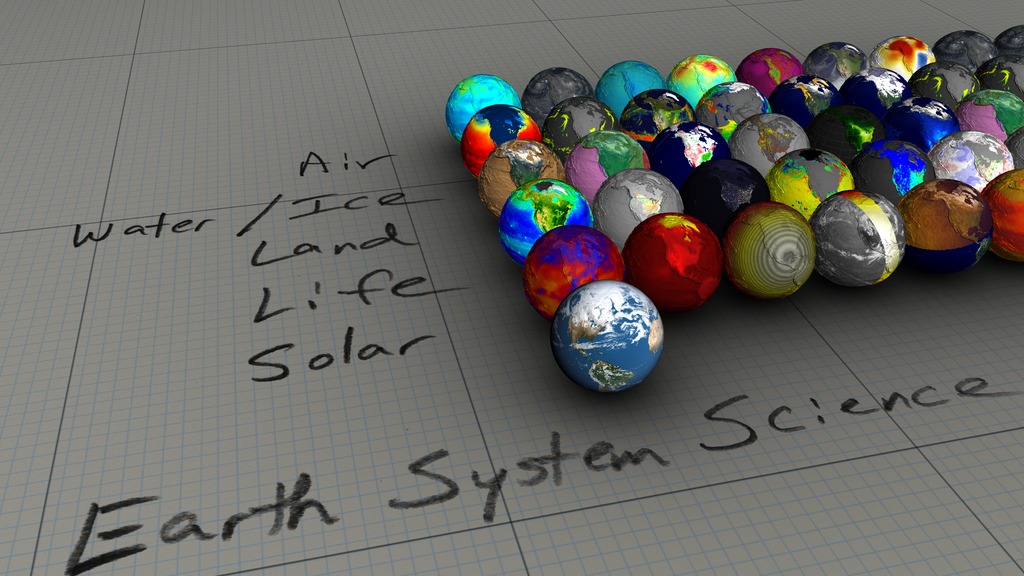Systems Thinking About the Earth System

This photo of Earth taken in December 1968 by the Apollo 8 astronauts was the first time humans were able to see our home planet as an isolated sphere in space. In this photo, it appears that Earth is floating among an ocean of darkness with all of its systems interwoven into a single fabric, one whole & connected system. Said Lovell, "The vast loneliness is awe-inspiring and it makes you realize just what you have back there on Earth."
Systems, Inputs, and Outputs
From Apollo 8 astronaut’s perspective of Earth from lunar orbit, the Earth appears as an almost isolated system, one in which no matter or energy enters or leaves. But scientists studying the Earth know that while we appear isolated, the interactions among Earth and the upper limits of Earth’s Atmosphere are far more complex.
Every system includes something called 'inputs' and 'outputs'. In your family car, the gasoline in the tank is an energy input to your car. The output of your car is the conversion of this input (gasoline) into motion. When you turn on the car radio, it has two inputs. The first is the electricity that runs the radio; the second input is the radio signal it picks up from the antenna. The output is the motion of the speaker which converts the electrical and radio energy into sound.
Any system within the Earth system is considered an open system. Because energy flows freely into and out of systems, all systems respond to inputs and, as a result, have outputs. For example, water and chemicals, as well as energy enter and leave the boundaries of a watershed system. Outputs from one part of the system are inputs for another part. This linked output-input connection is often called ‘feedback’. The inputs and outputs are important for understanding the dynamics of the system you are studying as these are the key for helping us identify one system from another.
When studying Earth as a whole, our primary input is energy from the sun and from space. Earth outputs heat and light to space, maintaining an approximate overall steady-state with respect to energy. With respect to matter, other than some particles entering Earth’s Atmosphere (meteors) and a few atoms (mainly hydrogen) entering and leaving the top of the Atmosphere in relatively small amounts (with the exception of major impact events occurring every 100 million years or so), the Earth is mostly a closed system.
Open systems usually exist in a state of balance, where the inputs equal the outputs, like Earth’s energy budget. The two types of balance (or equilibrium) are static and dynamic. Static systems exist where the parts of the system remain the same over long periods of time such as elevation or soil type. Dynamic systems occur when a system is in a steady state due to inputs and outputs that generally balance over much shorter periods of time (i.e., temperature, precipitation, solar radiation, ozone, etc.).In dynamic systems, motions help keep the system at steady state.
Feedback Loops
Systems are managed by feedback loops, processes where the output of the system is fed back or returned to the input. There are positive and negative feedback loops that exist in almost all systems. Don’t be fooled, however, by the terms positive and negative feedback, which may imply one is good and one is bad. It is actually often the opposite; that the negative feedbacks are what produces balance in the Earth System, whereas the positive feedback loops can act like a runaway train. Positive feedback loops are activities that increase the effects of the interacting parts of the system, while negative feedback loops are activities that decrease the effects of the interacting parts of the system to help maintain equilibrium.
- Positive Feedbacks: increase in the output increase or amplify changes in the system away from its equilibrium and creates more increase in output destabilizing the system. Causes change in the same direction as the system.
- For example, the warming of the high northern latitudes is related to the reduction of time when the surface is covered by ice or snow. The warming of the high northern latitudes is often thought of as an example of a positive feedback loop: the more ice melts, the less sunlight is reflected away, which leads to more warming, which leads to more ice melting, and so on.
- Negative feedbacks: the response is the opposite of the original input; promoting stability but neutralizing or counteracting processes that cause the system to be out of equilibrium; often self regulating (e.g., thermostat in your house.)
- There are also examples of negative feedbacks in our Earth System. Take for example when the Earth’s ocean surface temperature heats up, it causes more evaporation from the oceans. This additional source of moisture into the atmosphere over the oceans can lead to more low-level marine clouds. Low-level marine stratocumulus clouds are often very reflective of solar radiation, so more of these clouds can thus increase the Earth’s albedo (or solar radiation reflectivity) and thereby cool the ocean surface temperatures.
Either way, most of these processes are completely natural; however, some can and are being influenced by human activity. As responsible residents of this planet, we need to do our best to understand how our actions are affecting our home and try to prevent any runaway trains from occurring on our watch.
Throughout changes in the Earth System, the spheres (Atmosphere, Biosphere, Cryosphere, Geosphere, and Hydrosphere) all cycle matter and energy through dynamic interactions. Instead of focusing on the one part of Earth, Earth System Scientists use other branches of science (i.e., biology, chemistry, and physics) to study the cycles that connect these systems with each other and to the Sun’s energy.
Examples of feedbacks in Earth's climate:
- Clouds. Clouds have an enormous impact on Earth's climate, reflecting about one-third of the total amount of sunlight that hits the Earth's atmosphere back into space. Even small changes in cloud amount, location and type could have large consequences. A warmer climate could cause more water to be held in the atmosphere, leading to an increase in cloudiness and altering the amount of sunlight that reaches the surface of the Earth. Less heat would get absorbed, which could slow the increased warming.
- Precipitation. Global climate models show that precipitation will generally increase due to the increased amount of water held in a warmer atmosphere, but not in all regions. Some regions will dry out instead. Changes in precipitation patterns, such as increased water availability, may cause an increase in plant growth, which in turn could potentially removing more carbon dioxide from the atmosphere.
- Greening of the forests. Natural processes, such as tree growth, remove about half of human carbon dioxide emissions from the atmosphere every year. Scientists are currently studying where this carbon dioxide goes. The delicate balance between the absorption and release of carbon dioxide by the oceans and the world’s great forested regions is the subject of research by many scientists. There is some evidence that the ability of the oceans or forests to continue absorbing carbon dioxide may decline as the world warms, leading to faster accumulation in the atmosphere.
- Ice albedo. Ice is white and very reflective, in contrast to the ocean surface, which is dark and absorbs heat faster. As the atmosphere warms and sea ice melts, the darker ocean absorbs more heat, causes more ice to melt, and makes the Earth warmer overall. The ice-albedo feedback is a very strong positive feedback.
https://climate.nasa.gov/nasa_science/science/
Cycles:
The major cycles that connect the different parts of the Earth system are the energy cycle, the water cycle (hydrologic cycle), rock cycle, and the biogeochemical cycles of important individual elements (e.g., carbon, nitrogen).
These cycles indicate a constant flow of material from one reservoir to another. Each cycle is made up of the following:
- Reservoirs/Stores: places where energy, water, and elements are stored for a period of time (e.g., chemical energy, sea ice, oceans, carbon dioxide)
- Processes that change the form of energy, water, and elements (e.g., photosynthesis, condensation, fire)
- Flux: the flow of energy and matter from one reservoir to another (e.g., radiation, precipitation, transpiration, ocean currents, wind, river flow)
- Transfer: when flow does not involve a change in the form of matter or energy (e.g., flow of material through living organisms like herbivore eating plants or the flow of material in abiotic processes like erosion on a beach, or flow of energy as in wind transferring heat)
- Transformation: when the flow involves a change in form of matter or energy (e.g., matter like sugars converted to starch through photosynthesis, energy such as light energy being converted by radiating materials to heat, matter to energy like burning coal)
Disciplinary Core Ideas:
Crosscutting Concepts:
- Systems and System Models
- Structure and Function
- Stability and Change




